Is a Moveable Chicken Coop Worth It? Benefits of a Chicken Tractor
We’re starting in on year 4 of using a mobile chicken tractor. From healthier birds to fertilization to pest control, we’ve found many benefits of having a mobile chicken coop!
In this blog post, we’ll go over the main types of mobile coops, the cost of making one versus buying one, and the benefits we’ve noticed while using ours.
What is a Moveable Chicken Coop?
A moveable chicken coop is simply a coop that moves around from place to place, rather than a traditional stationary coop. There are different styles of mobile coops (often referred to as “chicken tractors”). Most are made with wood frames outfitted with chicken wire and/or fencing, a tarp or metal roof, and wheels to allow the coop to move easily.
Paired with a gravity feeder and waterer, the right time of year, and the right breed, we’ve found that raising our own meat chickens is about as hassle-free as raising your own meat can get!
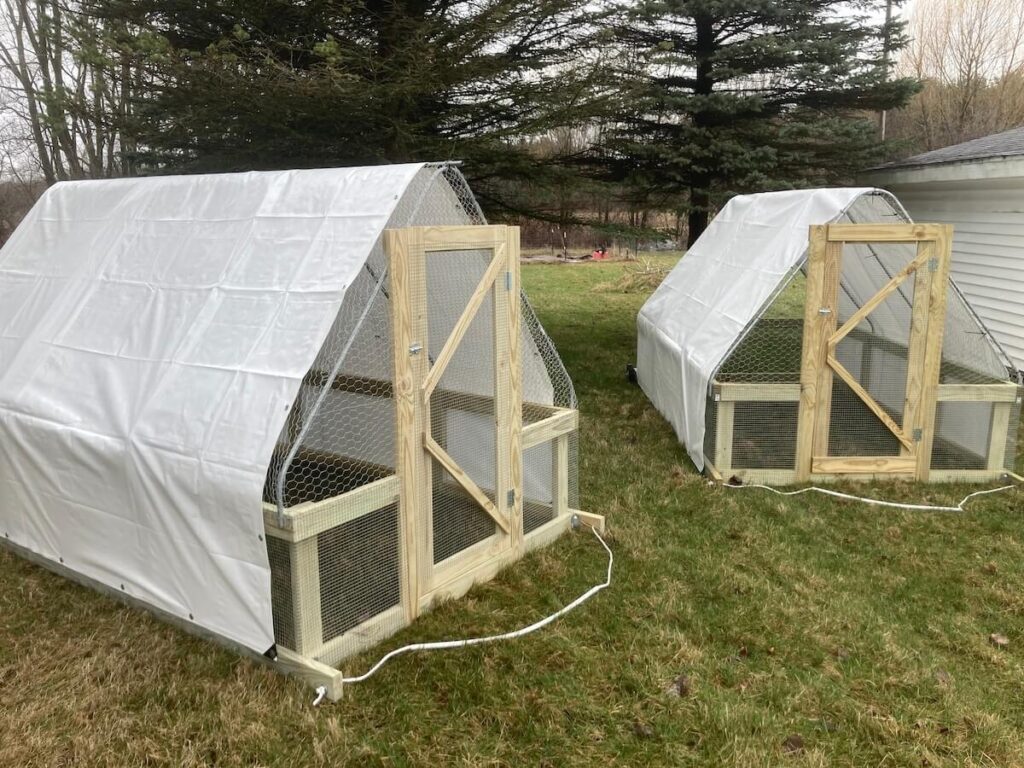
Types of Mobile Chicken Coops
When we were looking to get a mobile chicken coop, the two most popular options we found were the Salatin-style chicken tractor (by Joel Salatin) and the Suscovich style. We decided to go with the Suscovich. Here’s a birds-eye view of the pros and cons of each option.
Salatin Mobile Chicken Coop – Pros and Cons
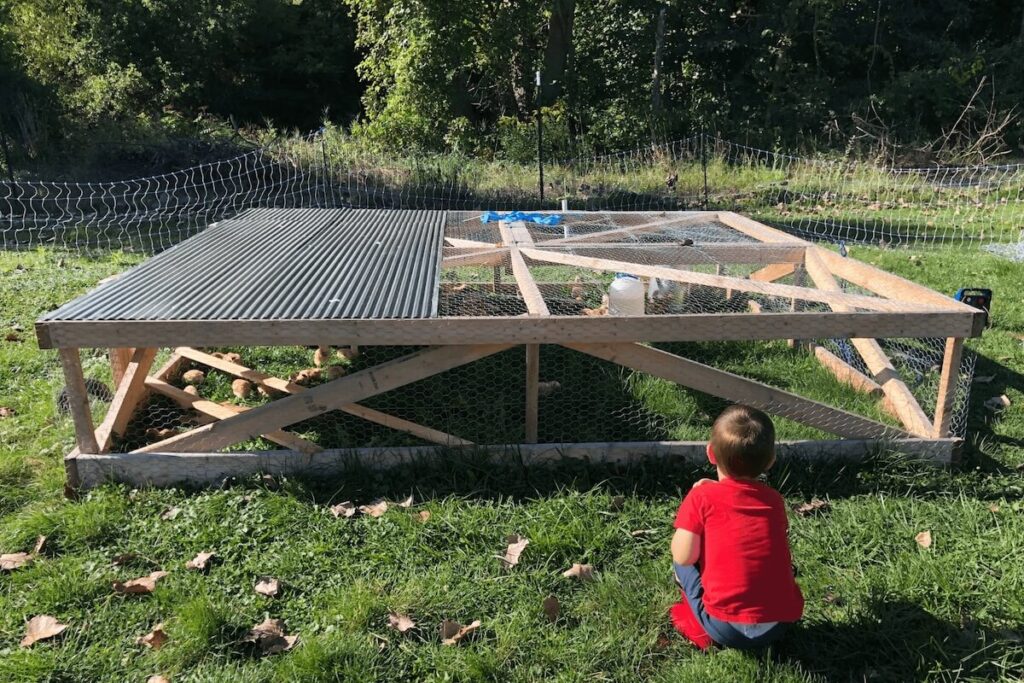
(This Salatin-Style coop was made by Rachel [and her family] of Grace Nourish Grow. You can read about her take on raising meat chickens for the first time here! Image used with permission.)
Pros:
- Holds more birds (up to 80).
- Low profile, which can be helpful in open areas with strong winds.
- Can offer more protected area from rain and inclement weather.
Cons:
- Heavier and more difficult to move around.
- Low profile can make it more difficult to catch chickens.
Suscovich Mobile Chicken Coop – Pros and Cons
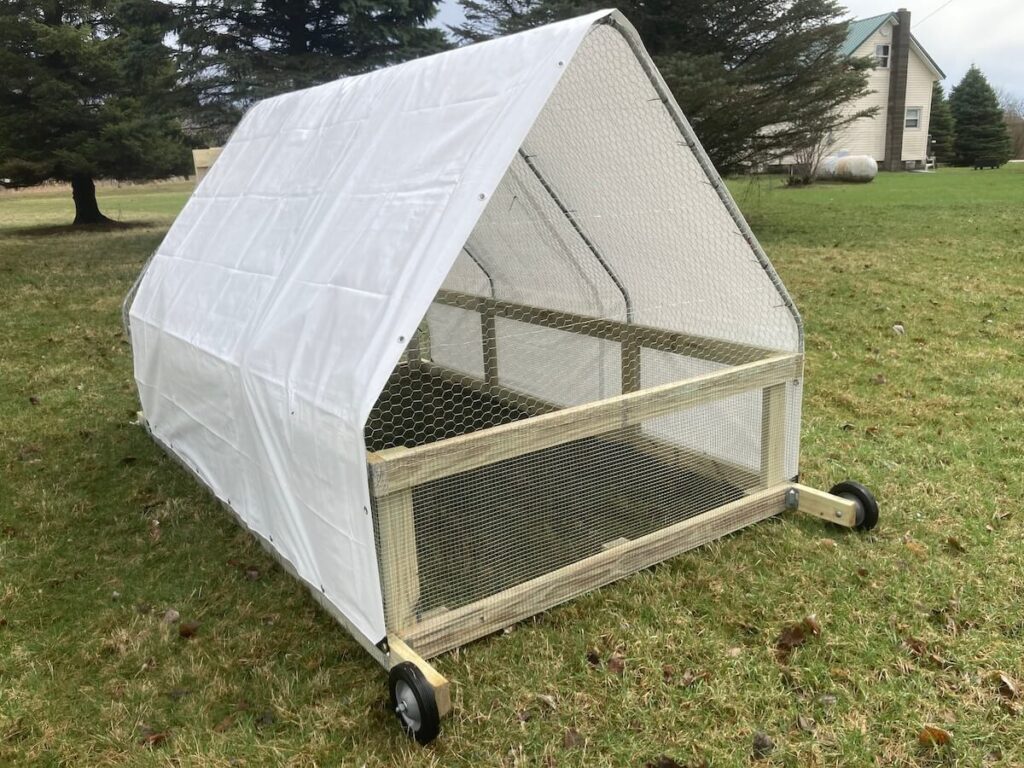
Pros:
- Tall enough for a person to walk inside/easy access to birds and feeder and waterer (we use a gravity-style waterer and feeder).
- Made with lightweight materials – easy for one person to move.
- Can be used for other purposes, such as holding other animals (we’ve even used ours to shelter our generator from rain when it wasn’t occupied with chickens).
Cons:
- Can’t hold as many birds (up to about 30).
- Similar cost to the Salatin-style tractor, even though it doesn’t hold as many birds.
Other Mobile Coop Options
The Justin Rhodes-style coop is another popular option among chicken keepers.
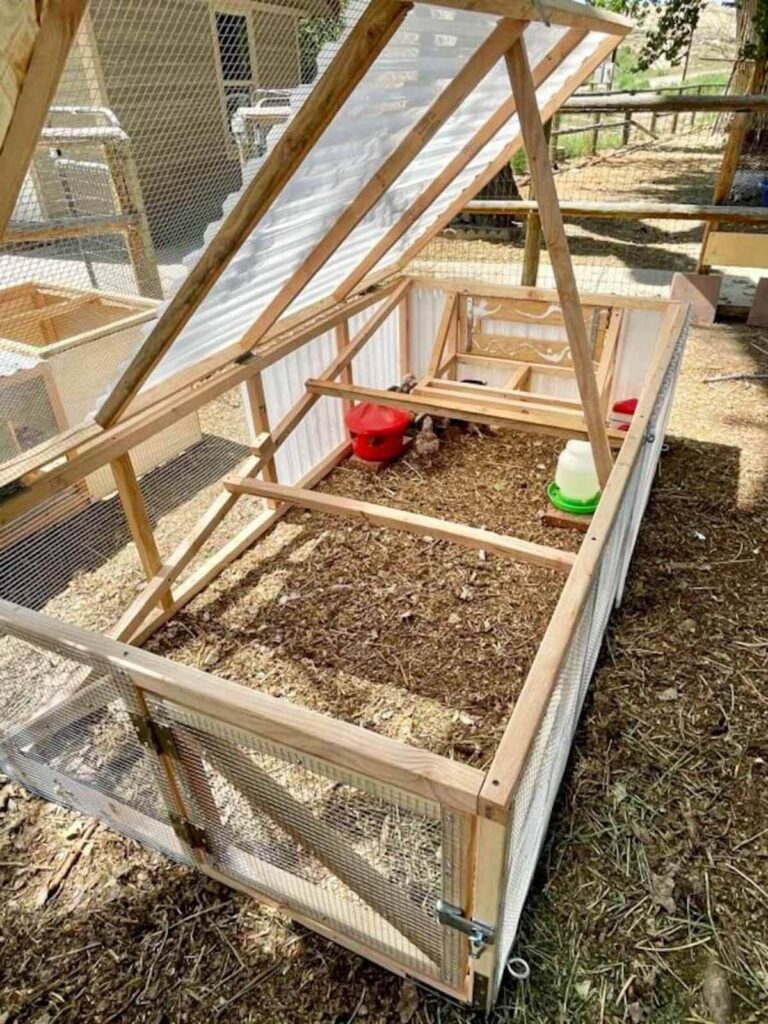
This coop (above) was made by Jamie and Rex at Arda Acres. You can read about how they made it and the total cost here! (Image used with permission.)
Choosing Your Ideal Chicken Coop
We really like our Suscovich-style tractor. It’s easy to move, fits our flock well, and is easy to duck inside to take care of and catch birds when needed.
When choosing which type of coop is best for you, take into account the size of your flock, how often you’ll need to access your chickens, and the type of property you have (a Suscovich tractor might be the best chicken coop option if you have less space, but Salatin-style may be the right choice for you if you have a wide open area with few wind blocks.)
Note: We have only used our tractors for meat chickens, but they can also be used for laying hens. These will require some slight differences, such as the addition of nesting boxes, a roosting bar, and perhaps more weather protection during the winter months depending on your climate.
If you’re curious about the cost of raising meat birds, check out our cost breakdown of raising both Freedom Rangers and Cornish Crosses.
Pin This Post for Later!
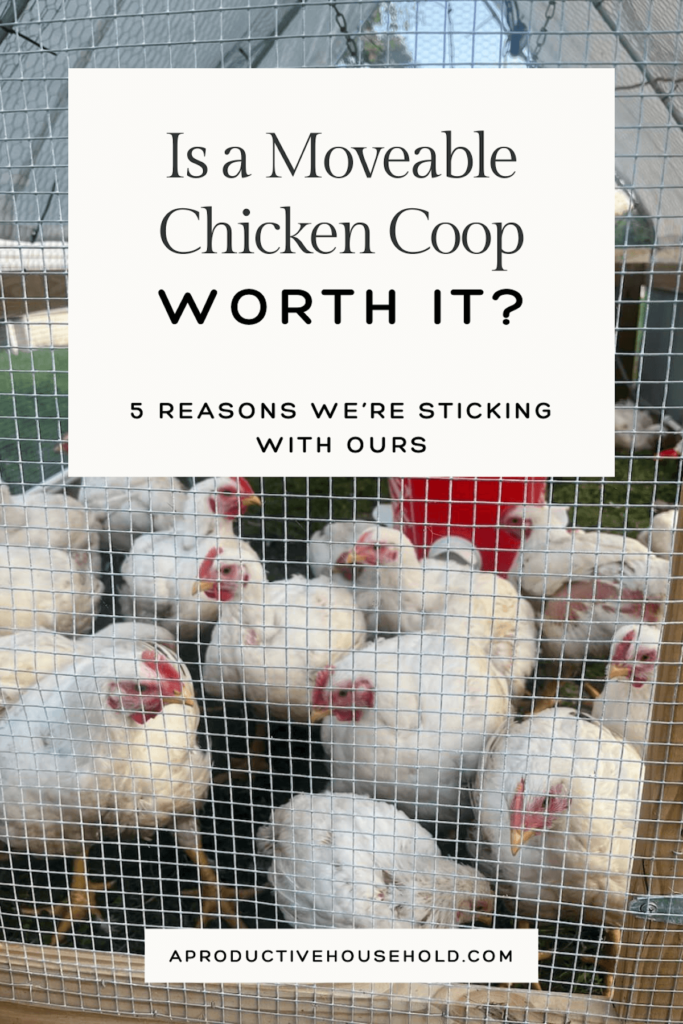
Build Vs. Buy?
There are a handful of other mobile chicken tractor options on the market that you can buy. None of the options we discussed above are especially difficult to make, so even if you don’t have carpentry skills, you can put one together!
When you build your own, you can also make it as fancy or “DIY” as you want. We used treated lumber to prevent the tractor from rotting out. But you may be able to use some free/cheap recycled materials (such as wood, tarps, and corrugated steel).
Here are some simple plans for building a Salatin-style tractor.
When we built our Suscovich chicken coop, we spent $10 PDF instructions from Farm Marketing Solutions, and it was well worth it!
What’s the cost difference?
The cost to build one of these mobile chicken coops is around $200-$350, depending on the exact materials you use.
If you’re going to buy a tractor that’s a similar size and quality to one of these models, they generally run anywhere between $500-$1000.
If you don’t have time to build your own but want to save some money, you might also consider looking around on Facebook Marketplace. We got a great deal on our first coop from someone on Marketplace who was done raising chickens. It started rotting out after a couple of years, and then we turned it into a small garden space (perfect for climbing peas and cucumbers and for keeping rabbits out!)
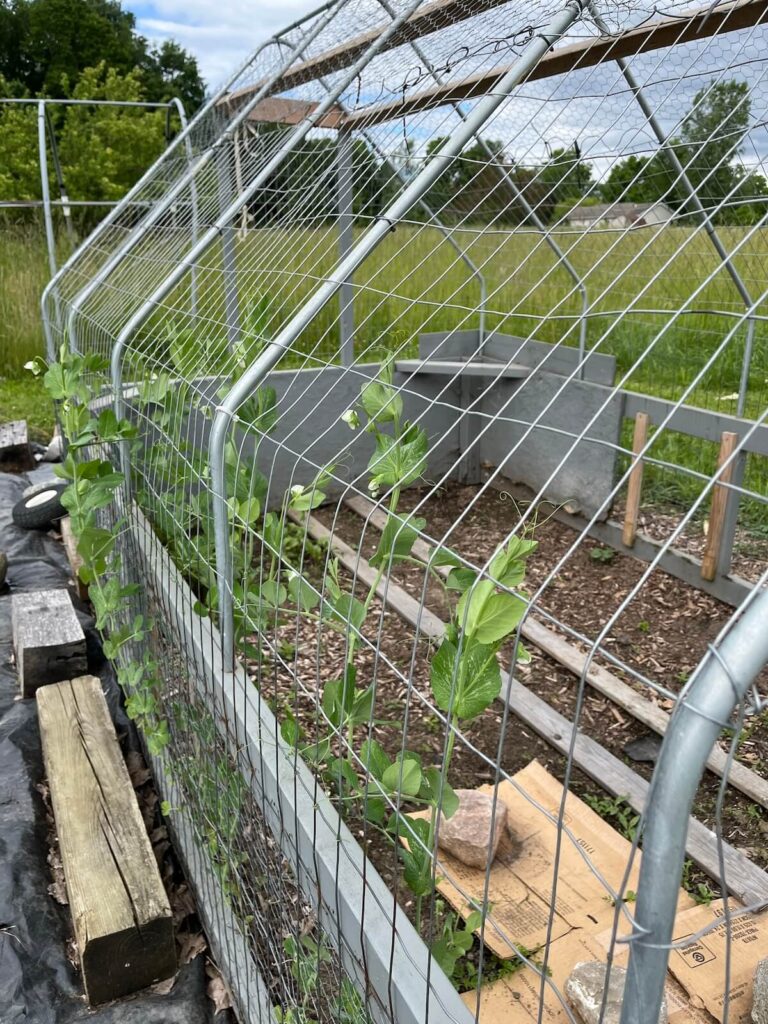
Benefits of a Moveable Chicken Coop
Here are 5 main benefits of a mobile chicken coop that we’ve noticed during the past 3 years of using our chicken tractors.
- Healthier chickens
- Fertilization
- Better hygiene
- Pest control
- Portability
1. Healthier, pasture-raised chickens
Chickens that have access to sunshine, fresh grass, and an overall more natural diet tend to be healthier than confined chickens (which just makes sense… aren’t humans the same way??). A portable chicken coop gives chicken keepers the benefits of free-range chickens while also keeping them confined and safe. (Personally, I also see the major benefit of being able to control where the chicken manure is around the yard, especially with barefoot children running around!)
Whether you raise your chickens for eggs or meat, birds raised on fresh pasture have more omega-3s, iron, and antioxidants. The sun exposure that most moveable chicken coops offer also helps the birds to get adequate vitamin D, which contributes to stronger bones, eggs, and immune systems.
If you’ve ever cracked a pasture-raised egg next to the egg of a chicken who hasn’t been on green grass, you know that the deep golden yolk speaks for itself about the health of these birds!
(If you haven’t seen them next to each other before, check out this post about laying hens to see the visual difference between store-bought and pasture-raised eggs!)
Raising chickens on grass can also cut down on feed costs, since the birds are able to forage for a part of their diet.
2. Fertilization
Chicken manure is full of nutrients that make for excellent fertilizer! It has nitrogen, potassium, and phosphorus, all of which are needed by plants for healthy growth (it’s especially high in nitrogen). In fact, some gardeners even buy chicken manure for its fertilization benefits.
After moving our chicken tractor around during the season, and only leaving it in each spot for a couple of days, the difference between where the chickens have been and not been is almost unbelievable. (We have a picture of the staggering difference in this blog post.)
Whether you want to fertilize an area for growing food or just want greener grass, being able to safely move your chickens around to different locations on your property is a cheap, easy, natural, and incredibly effective way to provide fertilization!
(Keep in mind that as a general rule of thumb, you should let chicken manure compost for at least 3 months before planting in the area.)
3. Better hygiene
A portable coop means easy cleaning and overall better hygiene for your birds! Because it keeps moving, you don’t get the pile up of manure that you get in immovable coops, especially during the winter months when your chickens are huddled inside and it’s harder to achieve proper airflow. And in the hot summers, most moveable chicken coops don’t stink the way that a permanent coop does.
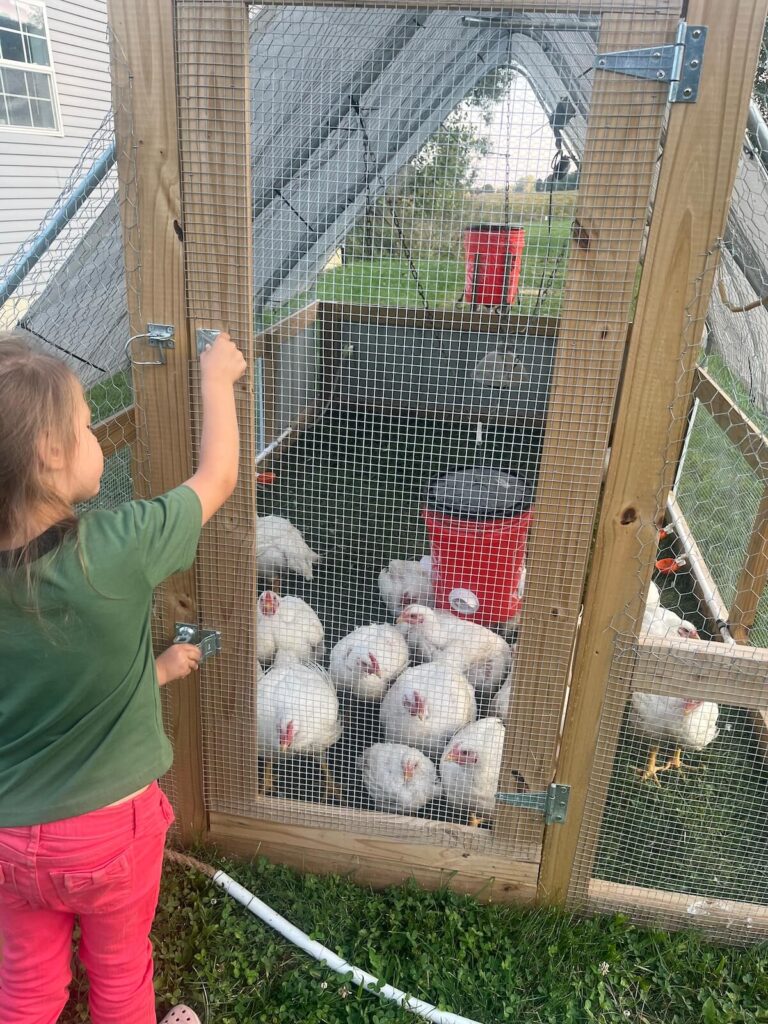
For many designs, you don’t have to worry about shoveling them out – just pick your coop up and move to the next spot! Any waste will simply compost and fertilize the ground.
Not only does a portable chicken coop tractor mean less maintenance, but it can also help prevent your birds from picking up parasites. It’s a great way to prioritize the health of your chickens while also making life easier for yourself!
4. Pest control
Moving your backyard chickens to different areas of the yard can also help with pest control. Chickens eat all sorts of bugs and insects that can be damaging to your garden and yard, or even to people. When you can move your birds around, they have much greater access to pests that might prove harmful.
A few pests that chickens love to munch include:
- Japanese beetles
- Ticks
- Cabbage worms
- Grasshoppers
- Hookworms
- Pill bugs
- Fleas
- Termite larvae
- Spiders
- Slugs
- and more!
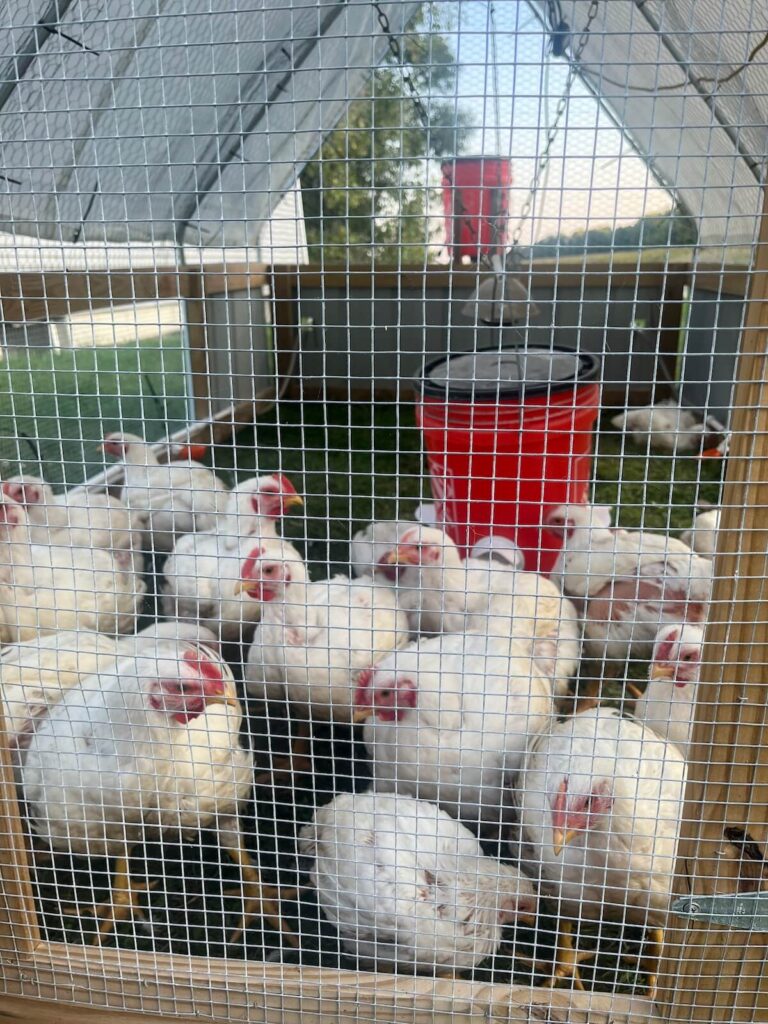
5. Portability
If you build or buy a traditional stationary coop, it’s kind of stuck there. Most chicken coops are quite difficult to move around, and sometimes it feels like a big decision to choose a spot where your flock will live for the foreseeable future. (I know we’ve been struck with indecision about where how to structure our property more than once!)
Unlike a static coop, the great thing about mobile chicken houses is that you don’t have to be confined to one spot for even a week, much less for many years! It’s easy to move the coop to a new location, so your chicken coop is never something you’re building the rest of your homestead plans around.
More than just the convenience of being able to use your space differently, it’s also helpful to be able to utilize different areas of your yard year by year. We’ve been amazed to see the difference in the health of the grass in places where our coop has been versus where it hasn’t. If you have future garden plans, you can move your coop to your future garden spot the year before.
You can even move your coop into your garden in the fall or winter to help get some chicken manure fertilizer on it for next year. (NOTE: It’s important to let chicken manure age for AT LEAST 3 months before planting in the same area. The high nitrogen content of fresh chicken droppings can “burn” your plants and can also host harmful bacteria that need time to decompose.)
The portability of a moveable coop also helps in weather changes. On very hot days, we move our coop into the shade, and in muddy seasons, we can move it more often to keep the chickens’ area cleaner.
FAQs About Moveable Chicken Coops
How do you move the coop with the chickens in it?
The first few times we moved our tractor coop were a little intimidating! Fortunately, every batch of chickens we’ve had has seemed to catch on quickly. Move slowly and just keep an eye on the birds to make sure they stay away from the back and sides of the coop. If they get too close, you can gently tap the outside of the coop with your foot.
We have had birds escape underneath a few times when we’ve lifted too high!
How much does a mobile coop cost?
The cost to build a Suscovich-style or Salatin-style mobile chicken coop tends to be around $200-300, depending on the materials you use and where you source them. Buying a pre-built coop usually starts at $500ish.
You may also be able to find a pre-built option for less on Facebook Marketplace.
How much land do you need for a moveable chicken coop?
We’ve found that the amount of space you have doesn’t necessarily matter as much as the topography. It’s important to have an open area that allows your coop stays on flat ground so that predators can’t easily sneak underneath. If you have low spots, it’s much easier for them to dig under.
(We’ve had our fair share of opossum and raccoon problems and have learned a few things along the way!)
The area we keep our chickens on is only about 1/4 of an acre or less. But, you need to make sure you have enough space to keep moving them around without hitting any hilly or low spots.
As for the size of your coop, you’ll need about 2 square feet per bird for broiler chickens and 4 square feet per bird for egg layers.







This is a very thorough overview with a lot of great information!
Thanks, Jamie!